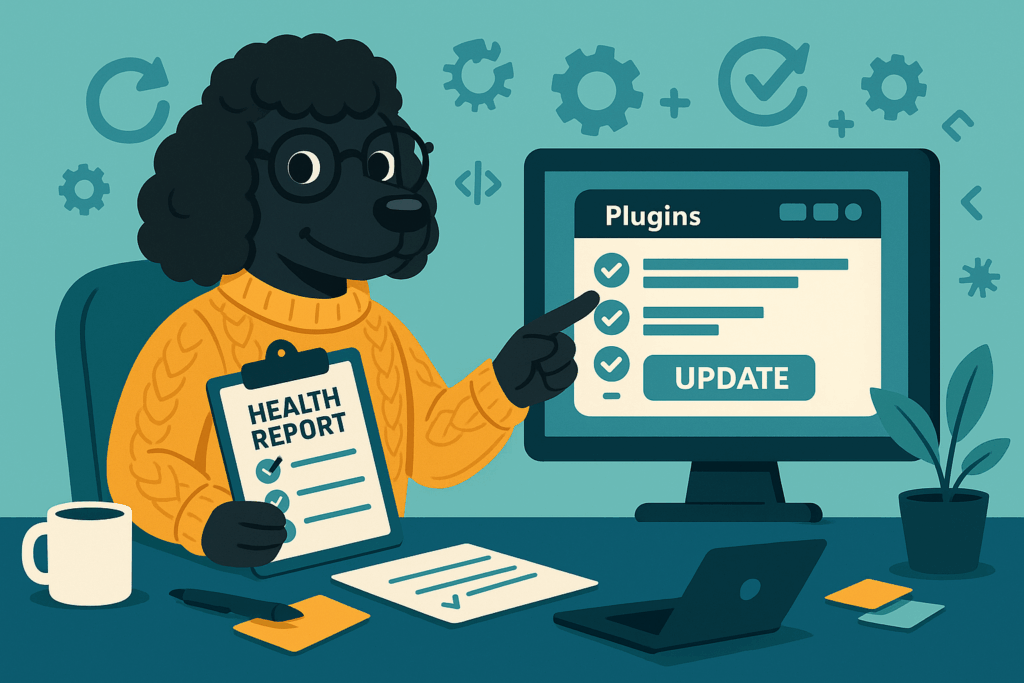How to Safely Update Your Website Plugins (Without Breaking Anything)
Keep your plugins secure and your site stable - update safely with backups, checks, and zero guesswork.

Estimated reading time: 4 minutes
If you’re managing your own website, one task that can’t be ignored is keeping your plugins up to date. You might be tempted to leave those little “update available” notices for another day, but outdated plugins can:
- Break parts of your site
- Open up serious security vulnerabilities
- Affect your speed, SEO, and user experience
In this guide, we’ll walk you through how to update your plugins the right way — safely and confidently — even if you’re not a developer.
What Are Plugins?
Plugins are like apps for your website. They add functionality without needing to write custom code.
For example:
- Contact form plugins
- SEO plugins like RankMath or Yoast
- WooCommerce for e‑commerce
- Performance or security plugins
If your site runs on WordPress (or a similar CMS), it’s likely powered by several plugins behind the scenes.
Why Updating Plugins Matters
Updating plugins isn’t just about getting new features.
It’s also about:
Security
Outdated plugins are one of the top causes of website hacks. Updates often include security patches to fix vulnerabilities.
Compatibility
CMS platforms like WordPress update regularly. Plugins need to stay compatible to prevent errors or broken features.
Bug Fixes and Performance
Developers constantly improve plugin code for speed, stability, and usability. Updates can help your site load faster and run smoother.
Before You Update: Safety Checklist
Before clicking “Update,” take a few quick precautions:
1. Back Up Your Site
Always create a full site backup — including files and database — before updating anything.
You can use plugins like:
- UpdraftPlus
- BlogVault
- Jetpack Backup
Many web hosts also offer one‑click backups from your control panel.
2. Check the Changelog
Most reputable plugins include a changelog that tells you what’s new, what’s fixed, and if there are any known issues.
Check it for:
- Major version jumps (e.g. 2.5 → 3.0 might be a big change)
- Compatibility notes (especially for WooCommerce or Elementor plugins)
3. Update One at a Time
Avoid updating 10 plugins at once. If something breaks, you won’t know which one caused it.
How to Update Plugins (Step by Step)
For WordPress Users:
- Log in to your WordPress dashboard
- Go to Plugins → Installed Plugins
- Look for plugins with a yellow notice: “There is a new version…”
- Click “Update now” next to each plugin
Optional: Go to Dashboard → Updates to batch update if you’ve reviewed each one.
Tips for Smooth Plugin Updates
Update Frequently
Don’t wait months to update — make it part of your weekly or monthly maintenance routine.
Use a Staging Site (Optional but Recommended)
If your site is high‑traffic or mission‑critical, use a staging environment to test updates safely before going live.
Many web hosts offer one‑click staging features.
Watch for Plugin Abandonment
If a plugin hasn’t been updated in 6–12 months, it may no longer be maintained. Consider replacing it with a more actively developed alternative.
What to Do If an Update Breaks Your Site
If something goes wrong:
- Restore your backup
- Disable the plugin via FTP or hosting panel
- Contact support or search for others with the same issue on forums
If you’re unsure, a developer can help debug and fix issues — especially for WooCommerce, membership sites, or anything custom.
Should You Use Auto‑Updates?
WordPress allows automatic plugin updates, which can be useful for small or low‑risk sites.
But for complex websites, it’s better to update manually so you can:
- Back up first
- Review the changes
- Avoid unexpected breakage
Use auto‑updates only for well‑maintained, trusted plugins that are unlikely to cause conflicts.
Final Thoughts
Keeping your plugins updated is one of the simplest ways to protect and improve your website. It boosts security, prevents bugs, and keeps your site fast and functional for your visitors.
If you’re not confident handling updates yourself, consider:
- Hiring a developer or web care provider
- Scheduling monthly maintenance support
- Using backup and staging tools to stay protected
Either way — don’t ignore plugin updates. A few minutes of maintenance now can save you hours of headaches later.
For help with plugin updates or a maintenance support package, get in touch with us at Poodle Plugins. Click here, to find out what a plugin developer does and why you may need one.
